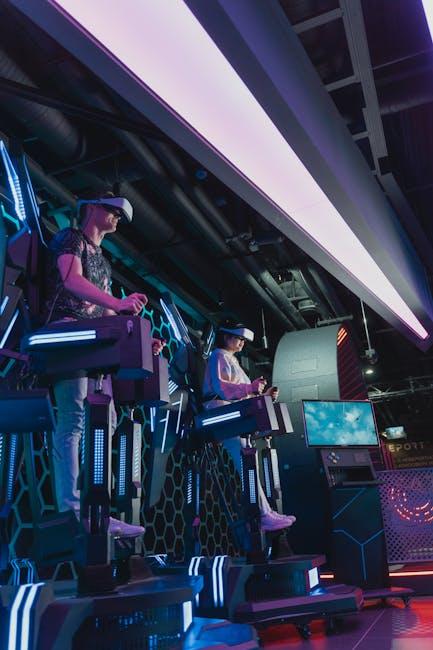Designing Player-Centric Economies in Open-World Games
In the dynamic landscape of open-world game development, crafting a player-centric economy is essential for boosting player engagement, ensuring balanced progression, and enhancing the overall gaming experience. A well-designed game economy not only reflects the immersive world but also empowers players to interact meaningfully with in-game resources, trade mechanisms, and rewards.
What is a Player-Centric Economy in Open-World Games?
A player-centric economy refers to a game economy designed around the players’ decisions, interactions, and influence rather than solely dictated by game developers or preset algorithms. In open-world games – known for their expansive maps and high player freedom – these economies adapt dynamically to player behavior, fostering a thriving and realistic virtual marketplace.
Unlike linear or static economies, player-centric designs actively respond to supply and demand, encourage player-driven trade, and balance resource allocation to prevent inflation or scarcity that can disrupt gameplay.
Why Focus on Player-Centric Economies?
The benefits of designing player-centric economies are multifaceted:
- Enhanced Player Engagement: Players feel more invested when their choices directly impact the economy.
- Realistic Market Dynamics: Supply and demand react to player activities, creating emergent gameplay opportunities.
- Balanced Progression: Prevents scenarios where players either accumulate wealth too easily or become stuck due to resource scarcity.
- Social Interaction: Fosters trade communities and player cooperation or competition.
- Longevity and Replayability: Dynamic economies keep the game fresh with continuous challenges and opportunities.
Key Elements of Player-Centric Economies
Successful player-centric economies incorporate several core elements that work together to create engaging and balanced gameplay:
1. Dynamic Supply and Demand
The economy must adjust to player-created supply and demand. For example, if many players farm a certain resource, its price drops, encouraging players to seek alternative goods or services.
2. Meaningful Currency Systems
Currency should have both utility and scarcity to remain valuable. Implementing multiple currencies (e.g., local coins, premium currency) adds depth and player choice.
3. Player-Driven Trade and Crafting
Allow players to craft items and trade them freely within the game world, crafting new wealth opportunities and promoting collaboration.
4. Inflation and Deflation Controls
Without controls, economies can become inflated (prices skyrocket) or deflated (prices collapse). Game designers can introduce mechanisms like taxes, item durability, or limited resources to stabilize the market.
5. Reward and Progression Systems
Economic rewards should align with player effort and time investments while encouraging exploration, skill mastery, or social play.
Practical Tips for Designing Player-Centric Economies
When building player-centric economies for open-world games, consider the following actionable tips:
- Start With a Clear Economic Model: Define the flow of currencies and resources early in development.
- Incorporate Player Data and Feedback: Use analytics and community input to fine-tune supply, pricing, and rewards.
- Create Multiple Viable Revenue Streams: Players should be able to earn and spend currency in varied, meaningful ways.
- Implement Dynamic Resource Generation: Prevent resource exhaustion by using regeneration timers or random spawns.
- Encourage Player Interaction: Design marketplaces, trading hubs, or player-run stores.
- Balance Between Progression Speed and Challenge: Avoid overly fast or slow player wealth growth to maintain engagement.
- Test Rigorous Inflation Controls: Regularly review data to safeguard the economy’s health.
Case Studies: Successful Player-Centric Economies in Open-World Games
| Game Title | Economic Feature | Player Impact |
|---|---|---|
| Sea of Thieves | Player-driven trade & dynamic supply chains | Players affect item availability, creating emergent trading opportunities. |
| Red Dead Redemption 2 | Immersive currency & resource management | Economy reflects environmental conditions, rewarding exploration and hunting. |
| Fallout 76 | Player markets & crafting economies | Thriving trader communities shaping item prices and supply. |
Benefits of a Player-Centric Economy for Developers and Players
- For Developers: Sustainability of the game economy leads to longer player retention and monetization opportunities.
- For Players: Greater sense of agency, rewarding experiences, and a social, interactive world.
Conclusion
Designing player-centric economies in open-world games is a complex but highly rewarding process that requires thoughtful balance, player engagement strategies, and adaptive frameworks. By focusing on player interaction, dynamic supply-demand mechanics, and economic controls, developers create immersive worlds that not only captivate players but also foster thriving communities and emergent gameplay. Investing in such economies ensures your game remains vibrant and engaging long after launch.
Whether you’re an indie developer or working with a major studio, understanding how to optimize player-centric economies can elevate your open-world game to new heights of success and player satisfaction.











